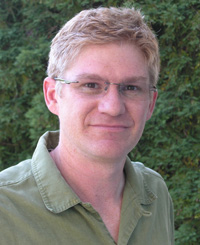The National Harmful Algal Bloom Committee (NHC) has elected Raphael Kudela, professor of ocean sciences at UC Santa Cruz, as co-chair of the committee.
The NHC brings together people from research organizations, government agencies, communities, and other organizations focused on harmful algal blooms while raising national-level awareness of bloom-related issues. NHC coordinates the U.S. national program on harmful algal blooms, Harmful Algal Research and Response: A National Environmental Science Strategy.
Kudela was elected by a vote among NHC members, and he begins his two-year term this month along with co-chair Barbara Kirkpatrick of Mote Marine Laboratory, a leader in research on Florida red tide and human health.
Harmful algal blooms (HABs) are rapid increases in microscopic algae that are toxic or otherwise harmful to humans, wildlife, or ecosystems. These blooms occur along every part of the U.S. coastline and potentially in every freshwater body in the country. Several types of harmful algal blooms occur along the California coast, including recurring blooms of Pseudo-nitzschia algae that produce a potent neurotoxin called domoic acid. During large blooms, the toxin enters the food chain, forcing the closure of some fisheries (such as shellfish and sardines) and poisoning marine mammals and birds that feed on contaminated fish.
Kudela leads a major effort to understand the conditions leading to blooms of toxic algae along the California coast. The project, funded by NOAA's Ecology and Oceanography of Harmful Algal Blooms (ECOHAB) Program, brings together researchers from several institutions to monitor study sites in Monterey Bay and southern California. Kudela also works with the California Department of Public Health to develop better monitoring tools for harmful algal blooms. He has investigated a wide range of HAB events on the west coast, including emerging problems such as freshwater algal toxins entering the coastal ocean.
Kudela's research focuses on understanding what controls phytoplankton growth and distribution in the ocean. Much of his work is aimed at developing predictive models for forecasting when and where harmful algal blooms will occur.



